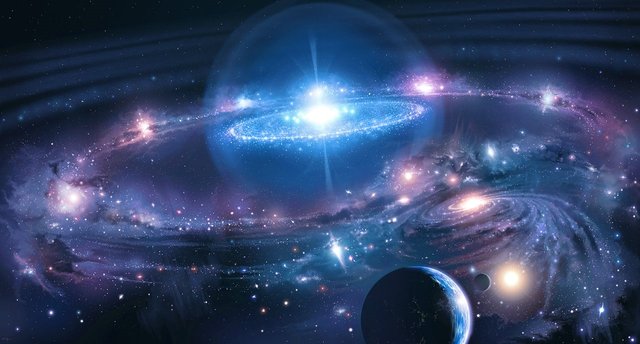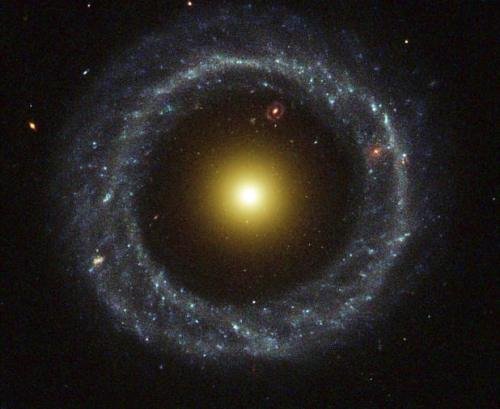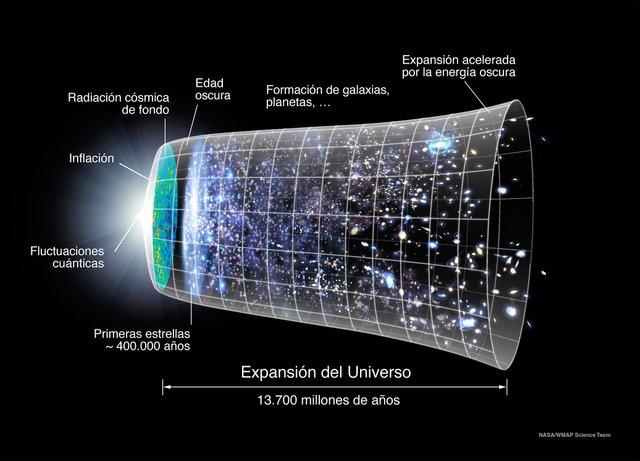In modern cosmology, the origin of the Universe is the moment in which all the matter and energy that currently exists in the Universe arose as a result of a great expansion. The postulation called the Big Bang theory is accepted by most scientists, and postulates that the Universe could have originated some 13,730 ± 120 million years ago, at a definite moment.1 2 In the decade In 1930, the American astronomer Edwin Hubble confirmed that the Universe was expanding, a phenomenon that the priest and astrophysicist Georges Lemaître described in his research on the expansion of the Universe (big bang), based on Albert Einstein's equations, and with the theory of general relativity. However, Einstein himself did not believe in his results, because it seemed absurd to him that the Universe was in infinite expansion, so he added to his equations the famous "cosmological constant" (this constant solved the problem of infinite expansion), which he would later call himself the biggest mistake of his life. That is why Hubble was recognized as the scientist who discovered the expansion of theUniverse.

Matter training
The theory of the Big Bang is that the universe that was once an infinitely dense singularity, mathematically paradoxical, with a very high temperature, at a given moment began to expand, generating a large amount of energy and matter separating everything, until now.
The Universe, after the Big Bang, began to cool down and, as it expanded, it became a cloud of energy. Protons and neutrons were "created" and stabilized when the Universe had a temperature of 100 billion degrees, about one hundredth of a second after the start. The electrons had a great energy and interacted with the neutrons, which had the same proportion as the protons, but because the neutrons became more protons than vice versa. The proportion continues to drop while the Universe is cooling; so, when the universe was 30 billion degrees at one time and had had neutrons for every sixty-two protons, and twenty-four times seventy-six when it was 10 billion degrees (one second).
The first to appear was the nucleus of deuterium, almost fourteen seconds later, when the temperature of 3000 million degrees allowed the neutrons and protons to remain together. By the time these nuclei could be stable, the Universe needed more than three minutes, when that incandescent ball had cooled to about 1000 million degrees.

Dark matter
Formally, so that all the exposed here can be valid, the scientists need of a matter additional to the known one (or more properly seen) by the man. Several calculations have shown that all the matter and energy that we know is very little in relation to what should exist for the big bang to be correct; so the existence of a hypothetical matter was postulated to fill that void, which was called dark matter, since it does not interact with any of the nuclear forces (weak and strong force) nor with electromagnetism, only with force gravitational. In the graph on the right you can see the calculated proportions.~~

The universe: The axis of the figure represents the temporal dimension; the increasing diameter represents the expansion of space.




